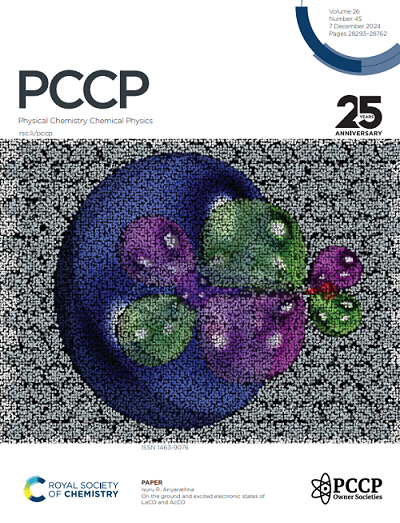B/N modified GDY as a rare base 2D sensor: a first-principles study
IF 2.9
3区 化学
Q3 CHEMISTRY, PHYSICAL
引用次数: 0
Abstract
Detecting DNA rare bases is essential for diagnosing genetic disorders and cancers. However, their low abundance and high structural similarity make selective and sensitive detection challenging. The two-dimensional functionalized carbon material graphdiyne (GDY) holds great promise for enhancing sensor performance due to its excellent electronic properties, biocompatibility, and ease of functionalization. This study employs density functional theory (DFT) to investigate the adsorption behavior of rare bases on GDY and R-GDY (R = B/N) surfaces. Essential factors, including adsorption energy, bandgap, charge transfer, and density of states, are systematically analyzed. Additionally, critical sensor performance metrics, such as deposition time, sensitivity, and selectivity are predicted, providing valuable insights into the potential applications of these materials. The results indicate that while pure GDY can specifically recognize 5-hydroxymethylcytosine, its sensitivity is limited. In contrast, R-GDY stably adsorbs rare bases via π–π interactions, exhibiting good reversibility and moderate charge transfer, which significantly enhance its sensitivity. R-GDY effectively distinguishes between rare bases based on translocation time, making it ideal for the development of efficient and reusable electrochemical biosensors, thus providing a reliable approach for clinical diagnostics.

求助全文
约1分钟内获得全文
求助全文
来源期刊

Physical Chemistry Chemical Physics
化学-物理:原子、分子和化学物理
CiteScore
5.50
自引率
9.10%
发文量
2675
审稿时长
2.0 months
期刊介绍:
Physical Chemistry Chemical Physics (PCCP) is an international journal co-owned by 19 physical chemistry and physics societies from around the world. This journal publishes original, cutting-edge research in physical chemistry, chemical physics and biophysical chemistry. To be suitable for publication in PCCP, articles must include significant innovation and/or insight into physical chemistry; this is the most important criterion that reviewers and Editors will judge against when evaluating submissions.
The journal has a broad scope and welcomes contributions spanning experiment, theory, computation and data science. Topical coverage includes spectroscopy, dynamics, kinetics, statistical mechanics, thermodynamics, electrochemistry, catalysis, surface science, quantum mechanics, quantum computing and machine learning. Interdisciplinary research areas such as polymers and soft matter, materials, nanoscience, energy, surfaces/interfaces, and biophysical chemistry are welcomed if they demonstrate significant innovation and/or insight into physical chemistry. Joined experimental/theoretical studies are particularly appreciated when complementary and based on up-to-date approaches.
 求助内容:
求助内容: 应助结果提醒方式:
应助结果提醒方式:


